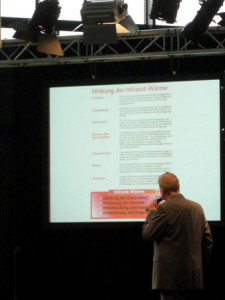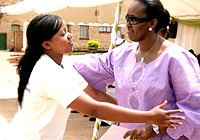Guest Post by Michael Lerner, PhD, President, Commonweal, Co-Coordinator of Collaborative on Health and the Environment’s (CHE’s) Breast Cancer Working Group, Co-Coordinator of CHE’s Cancer Working Group, Co-Coordinator of CHE’s Integrative Health Working Group
The crash and burn of an autism guru. Andrew Wakefield has become one of the most reviled doctors of his generation, blamed directly and indirectly, depending on the accuser, for irresponsibly starting a panic with tragic repercussions: vaccination rates so low that childhood diseases once all but eradicated here have re-emerged, endangering young lives. New York Times [Registration Required]
This article in The Times and the Robert MacNeil autism series on PBS are both testimony to how the public and scientific dialogue on autism is changing. Martha Herbert of Harvard was a leading voice in MacNeil’s documentary. Herbert is a senior advisor to CHE-Autism, and one of the most distinguished proponents of the new paradigm of autism research and treatment.
When MacNeil on PBS gives such strong authoritative visibility to Herbert’s perspective, it is clear that the field has shifted in a significant way — and shifted in the specific direction that many CHE Partners have believed was warranted for many years. So it is a good moment to reflect on what we are witnessing and lessons learned.
We are witnessing a decisive shift toward mainstream researchers recognizing a contributing role
of environmental factors interacting with genetic factors in ASD. There is also, specifically, more mainstream recognition of the contribution of GI disorders to symptomatic distress in some ASD spectrum children — and the benefit of dietary change for some of these children. The debate continues over an essentially linguistic question of whether the dietary shifts that reduce symptomatic distress represent a treatment for the ASD disorder or simply a relief of GI distress unassociated with ASD. Those who argue the latter are on shaky ground because of the scientific evidence of strong gut-brain connections. Nonetheless, the linguistic conceit that this is “just” GI relief unconnected to the ASD disorder is a step forward since it allows mainstream clinicians to treat the gut disorder without needing to accept that for some children this may indeed affect the theoretically separate ASD disorder as well. This reduces human suffering — the key purpose of the whole enterprise.
With this middle ground increasingly established, despite the linguistic variants of interpretation, the remaining controversy shifts increasingly back to the vaccine debate, which has always been more hotly contested. Part of that debate is whether vaccines contribute to the gut disorder. Increasingly, we see some mainstream researchers agree that the role of vaccines in a subset of ASD children “deserves further study.” This debate is, of course, so hot because of the concern of pediatricians and public health officials with declining vaccination rates and associated health dangers. Again we see movement toward middle ground: reformulation of vaccines, teasing apart which vaccines have a higher priority, teasing apart timing of vaccines, dis-aggregation of vaccines, and exploration of integrative approaches to enhancing resilience both to disease and to vaccines.











